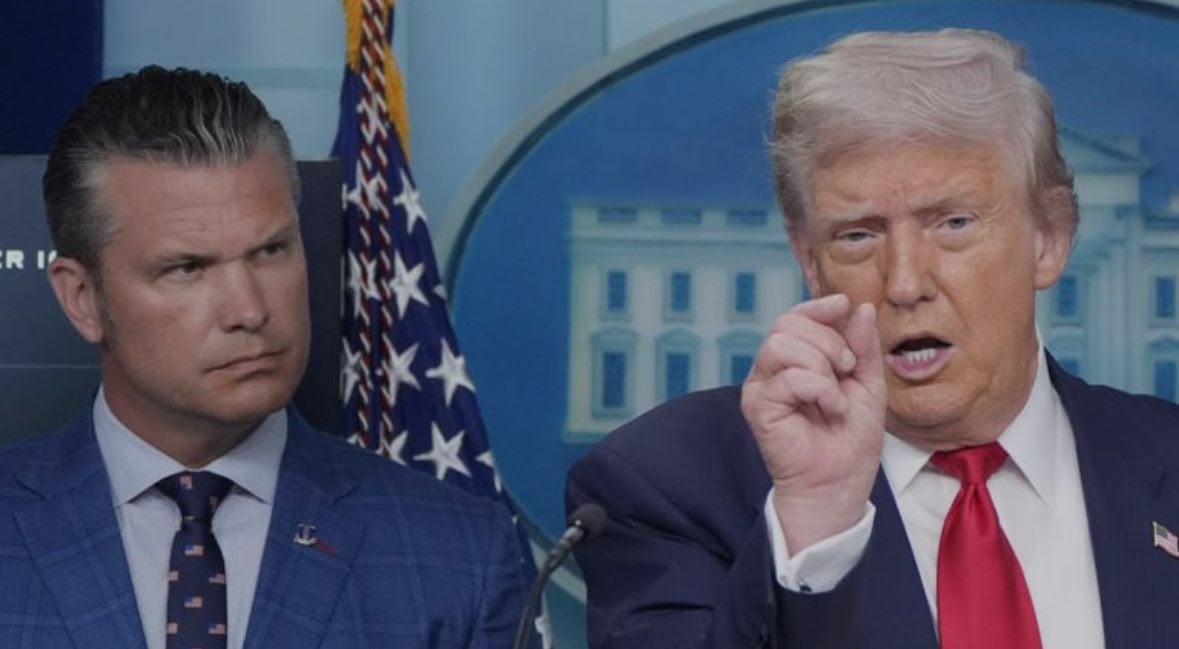End of Defense, Start of War: Trump’s Controversial Order Shakes Up the Equations
End of Defense, Start of War: Trump’s Controversial Order Shakes Up the Equations
This article, penned by Saeed Aganji, editor of IranGate News Agency, offers an analytical and critical look at Donald Trump’s controversial decision to revive the historical title of the Department of War instead of the Department of Defense in the political structure of the United States.
This decision, which was announced in September 2025 through an executive order by the U.S. President, may seem like a simple lexical change on the surface, but it carries complex geopolitical and identity messages beneath it. In this report, the author reviews the historical background of this term, its political reflections, social costs, and the perspectives of supporters and opponents to address the key question: Is the return to the term ‘war’ a strategic necessity or merely a symbolic and costly gesture in the path of redefining America’s authority?
Return to the Department of War: A Linguistic Change or Redefining America’s Military Strategy?
Donald Trump, by signing an executive order, authorized the reuse of the name Department of War instead of the Department of Defense. This action appears symbolic on the surface, but it has deep roots in the political and military history of the United States, as this key institution in the federal government structure was known by this title until 1949. Now, this decision is not only seen as a historical return but also, in the eyes of observers, as a sign of a fundamental shift in Trump’s view of the role of the military, foreign policy, and the national identity of the United States.
A Look at the Past of the Department of War and the Era of Direct Power Display
The United States Department of War, from 1789 until the end of World War II, was the backbone of America’s military strategy, from managing internal campaigns to commanding in world wars. This department was a symbol of America’s hard power and aggressive will. However, following the passage of the National Security Act in 1947 and its merger with the Department of the Navy in 1949, this new structure emerged as the Department of Defense—a change aimed at presenting a more peace-seeking and less aggressive image of America. This symbolic change actually represented a transition from an attack-to-win approach to policies of containment, deterrence, and multilateral cooperation.
However, Trump believes that this linguistic shift has been part of the process of diminishing national authority and has distanced America from its historical position as an unchallenged superpower. In his recent speech, he said America must relearn how to project power without apology.
The Executive Order: The Start of a Complex Path

Trump’s order in September 2025 allows the use of the term Department of War in official documents, government correspondence, and the introduction of officials. Even Pete Hegseth, the then Defense Secretary, can now publicly introduce himself as the Secretary of War of the United States. However, permanently and legally changing the name of this department still requires congressional approval—a difficult path that, according to legal experts, requires changes in federal laws and a redefinition of the executive branch structure. Trump’s legal team has announced that they are looking for alternative ways to achieve this goal, indicating that this action is not merely a symbolic move or a choice of words, but part of a broader redefinition of U.S. military policy.
The War of Words: Reflections of Trump’s View on Power
Changing the name from the Department of Defense to the Department of War, in the eyes of Trump and his advisors, is an attempt to correct the broken political language in U.S. foreign policy. They argue that the word ‘defense’ is overly cautious and passive, presenting an image of passivity in the face of threats.
Conversely, ‘war,’ according to them, carries an explicit, deterrent, and powerful meaning—a word that instills fear in the enemy before a shot is fired.
As one of Trump’s advisors put it, America must once again speak the language of power, not the language of compromise.
This change, especially in a time when the United States is facing multiple challenges from China, Russia, and non-state actors, can carry a strategic message both domestically and internationally. America no longer intends to remain in the guise of a defender but wants to become a more aggressive player.
Financial Costs and Political Consequences
Despite Trump’s emphasis on the symbolic weight of this change, critics are concerned about its financial and political consequences. The experience of renaming U.S. military bases, including the removal of names of Confederate-era commanders, has left millions of dollars in costs.
Now, the full implementation of this change, including redesigning uniforms, logos, signs, official documents, and digital systems of the Department of Defense, could impose a billion-dollar cost on taxpayers.
Moreover, the diplomatic dimensions of this decision are also a subject of extensive discussion in international circles. International institutions and long-standing U.S. allies might perceive the return to a word like ‘war’ as a sign of regression to the power-centric policies of the 20th century—a stance that contradicts the values of a multilateral global order.
In fact, from the perspective of some diplomats, this action could deepen the rift between Washington and its allies and pave the way for strategic divergence.
Views of Military Personnel and Security Observers
Despite support from some of Trump’s backers, many retired generals, national security experts, and military strategists view this change with skepticism.
They believe that the military challenges of the 21st century—from hybrid wars to cyber battles and artificial intelligence threats—are too complex to be addressed merely with symbolic tools or changes in terminology.
Retired General John Allen said in an interview that naming is part of organizational identity, but the reality is that what determines victory is operational readiness, logistical support, and advanced technology, not the title on a sign.
Return or Regression
Ultimately, Trump’s decision to revive the name Department of War can be interpreted in two contexts: for some, it is a bold step to restore America’s lost authority; for others, it is a worrying sign of a desire for aggression and a departure from diplomatic principles.
Regardless of the final outcome in Congress, this action shows that the Trump administration has taken steps toward redefining the language and military image of the United States—even if this redefinition is more based on words than operational strategies.
While the world faces unprecedented challenges such as climate change, arms race, artificial intelligence, and geopolitical instability, the question remains: Does returning to the word ‘war’ make America more powerful, or merely more costly, isolated, and risk-prone?

